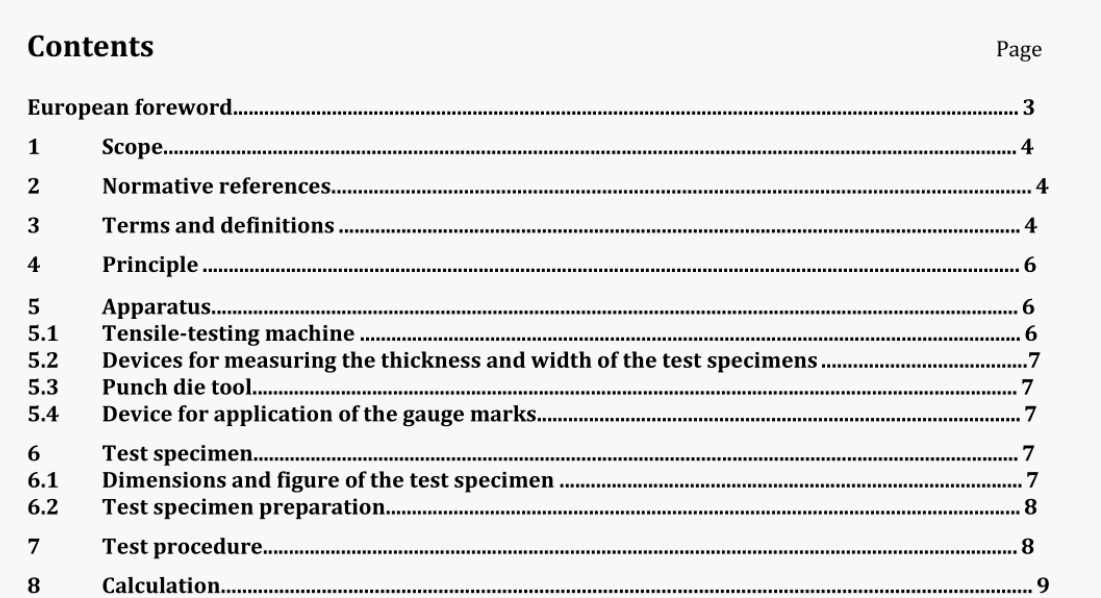BS EN 17096:2018 pdf download.Geosynthetics – Test method for the determination of the strain hardening modul us of PE-H D geosynthetic barriers
1 Scope
This document specifies a test method for the measurement of the strain hardening modulus which is used as a measure for the resistance to slow crack growth of polyethylene. The strain hardening modulus is obtained from true stress versus draw ratio curves on PE-HD geosynthetic barrier samples.
This standard specifies how measurement is performed and how the strain hardening modulus is determined. Details of the required equipment, precision and sample preparations are given.
This test method is suitable for all PE-HD types of GBR-P.
2 Normative references
The following documents are referred to in the text in such a way that some or all of their content constitutes requirements of this document. For dated references, only the edition cited applies. For undated references, the latest edition of the referenced document (including any amendments) applies.
EN 1849-2:2009, Flexible sheets for waterproofing – Determination of thickness and mass per unit area -Part 2: Plastic and rubber sheets
EN ISO 9863-1:2016, Geosynthetics – Determination of thickness at specified pressures – Part 1: Single layers (ISO 9863-1:2016)
EN ISO 527-1, Plastics – Determination of tensile properties – Part 1: General principles (ISO 527-1)
EN ISO 7500-1, Metallic materials – Calibration and verification of static uniaxial testing machines – Part 1: Tension/compression testing machines – Calibration and verification of the force-measuring system (ISO 7500-1)
EN ISO 9513, Metallic materials – Calibration of extensometer systems used in uniaxial testing (ISO 9513)
5.2.2 Width (b) shall be measured with an optical device with an accuracy of 0,01 mm, according to EN 1849-2:2009, 5.4.3. Three additional specimens, which are not used for determination of strain hardening modulus but which are punched using the identical punch die tool as for the test specimens tested for strain hardening modulus shall be measured optically. A cutting of the cross section area perpendicular to the axis of the specimen within the gauge length of each of the three specimens shall be prepared. The widest width as well as the narrowest width of each specimen’s cutting shall be determined and recorded. The mean value of all six values regarding width (two measured values per specimen) will be applied for all test specimens tested for strain hardening modulus for calculation of stress. The dimensions of the cross section area have a great influence on the value of strain hardening modulus. Due to the punching, the width of specimens might be conical shaped. The dimensions close to the bottom surface of the geosynthetic barrier and close to the top surface of the geosynthetic barrier might be significantly different. Mechanical measurement of width cannot take this into account. Therefore, special attention has to be payed to determination of width by performing optical measurements instead of mechanical measurements.
BS EN 17096:2018 pdf download
